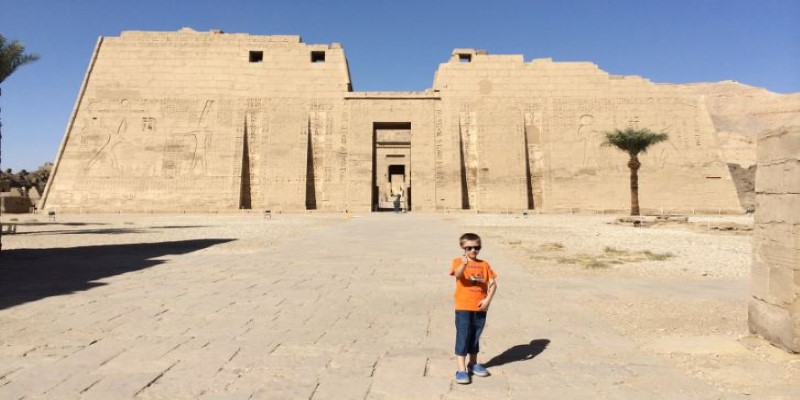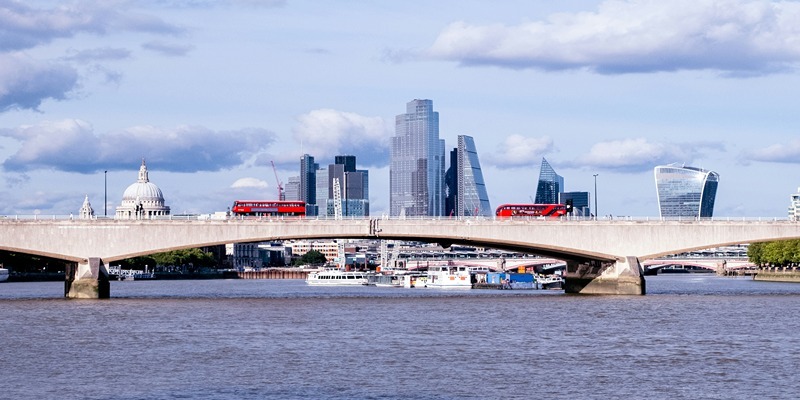When most travelers visit Luxor, they focus on the iconic temples of Karnak and Luxor or the tombs of the Valley of the Kings. However, tucked away nearby is the Medinet Habu Temple, a hidden gem often overlooked by tourists. This remarkable site, located on the West Bank of the Nile, is dedicated to the god Amun and to Ramses III, the pharaoh who commissioned its construction.
The well-preserved reliefs, towers, and carvings make the temple a wonderful gateway into ancient Egyptian religious life, military victories, and the power of royalty. Medinet Habu is, therefore, a must-see for those who would seek to understand Egypt's New Kingdom era in more peace and intimacy than that witnessed at Luxor's much-famed monuments.
The History and Significance of Medinet Habu Temple
Medinet Habu Temple, often referred to as Madinat Habu, is an ancient Egyptian mortuary temple complex that was primarily built during the reign of Ramses III, one of the last great pharaohs of the New Kingdom. The temple was constructed to honor both Amun, the king of the gods, and Ramses III himself, who sought to ensure his legacy and provide a sacred space for worship after his death.
Ramses III was Egypt's ruler from approximately 1186 to 1155 BCE, with military successes being the hallmark of his time in power. This fact is particularly evidenced in the protection of Egypt from the Sea Peoples, who were an aggregation of marauders sweeping into the Mediterranean region from the east. Scenes showing these victories adorn the reliefs that line the temple walls and towers, documenting his reign and its successful military accomplishments. The temple's design represents the most traditional Egyptian mortuary temples. It can be identified by their main characteristics, such as large forecourts, a hypostyle hall, and smaller chambers devoted to individual gods and royal personalities.
Medinet Habu was not just a religious site; it also served as a political and symbolic center. The temple's grandeur and artwork were a way for Ramses III to demonstrate his divine connection to the gods and reinforce his power. Over time, the temple also became a burial place for some of the pharaohs of the 20th Dynasty, further cementing its importance as both a spiritual and royal hub.
Exploring the Temple Complex
Medinet Habu Temple is divided into several sections, each of which holds its unique features and historical significance. The temple's outer walls are adorned with massive reliefs depicting scenes of Ramses III's military victories, including his battles against the Sea Peoples. These vivid images bring to life the pharaoh's campaigns and highlight his role as Egypt's protector. The scenes are often accompanied by hieroglyphic inscriptions that describe the events in great detail, providing a wealth of information about the ancient Egyptian military and their enemies.

As you enter the temple, you'll pass through the large towers, or monumental gateways, that mark the entrance to the main temple complex. These towers are decorated with scenes of Ramses III smiting his enemies, reinforcing the theme of military strength and divine favor. The entrance leads to a spacious forecourt, where large columns stand tall and proud and where worshippers would have gathered to honor the gods and the pharaoh.
Beyond the forecourt, the temple opens into the hypostyle hall, a vast room filled with columns that support the roof. This hall is the heart of the temple, where rituals and ceremonies would have taken place. The walls of the hall are decorated with intricate reliefs that depict scenes of Ramses III offering sacrifices to the gods, as well as more depictions of his military successes. The artistry and attention to detail in these carvings are remarkable, offering visitors a window into the religious and cultural practices of ancient Egypt.
The Medinet Habu complex includes the main temple and a smaller temple dedicated to the goddess Hathor, as well as several smaller shrines and chapels. The entire site is surrounded by a high mudbrick wall, which once protected the temple complex and its inhabitants. The temple's interior is also filled with numerous chambers, each dedicated to a different deity or royal figure, including representations of Ramses III himself, who is often shown in a divine form.
Visiting Medinet Habu: Practical Tips
While Medinet Habu Temple is a significant historical site, it is often less crowded than other temples in Luxor, making it ideal for exploring Egypt's ancient past in peace and solitude. The temple is located on the West Bank of Luxor, near the Valley of the Kings and the Temple of Hatshepsut, so it's easy to combine it with other nearby attractions during your visit.

To get to Medinet Habu, you can hire a taxi or use a local tour guide to take you to the temple. If youre staying in Luxor, its a short drive across the Nile to the West Bank. Many tours of Luxor include Medinet Habu as part of a larger itinerary, but you can also visit the temple independently if you prefer a more personalized experience.
As with many archaeological sites in Egypt, its best to visit Medinet Habu early in the morning or later in the afternoon to avoid the midday heat and the crowds. Luxor can be extremely hot, especially during the summer months, so its important to bring plenty of water, wear comfortable clothing, and protect yourself from the sun.
Conclusion
Medinet Habu Temple is a hidden gem that offers a unique glimpse into ancient Egypt's grandeur. While less famous than other Luxor temples, its well-preserved reliefs, monumental architecture, and rich history make it equally impressive. The temple, dedicated to Ramses III, showcases his military victories and spiritual devotion, bringing ancient Egypts power and mythology to life. For those seeking a more peaceful, intimate experience of Egypts past, Medinet Habu is a must-visit. Its intricate carvings and timeless atmosphere provide an unforgettable connection to one of historys greatest civilizations.







